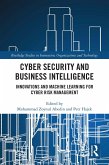. evaluate different types of cyber risk
. carry out a threat analysis and place cyber threats in order of severity
. formulate appropriate cyber security management policy
. establish an organization-specific intelligence framework and security culture
. devise and implement a cyber security awareness programme
. integrate cyber security within an organization's operating system
Learning objectives, chapter summaries and further reading in each chapter provide structure and routes to further in-depth research. Firm theoretical grounding is coupled with short problem-based case studies reflecting a range of organizations and perspectives, illustrating how the theory translates to practice, with each case study followed by a set of questions to encourage understanding and analysis. Non-technical and comprehensive, this textbook shows final year undergraduate students and postgraduate students of Cyber Security Management, as well as reflective practitioners, how to adopt a pro-active approach to the management of cyber security. Online resources include PowerPoint slides, an instructor's manual and a test bank of questions.
Dieser Download kann aus rechtlichen Gründen nur mit Rechnungsadresse in A, B, BG, CY, CZ, D, DK, EW, E, FIN, F, GR, HR, H, IRL, I, LT, L, LR, M, NL, PL, P, R, S, SLO, SK ausgeliefert werden.









